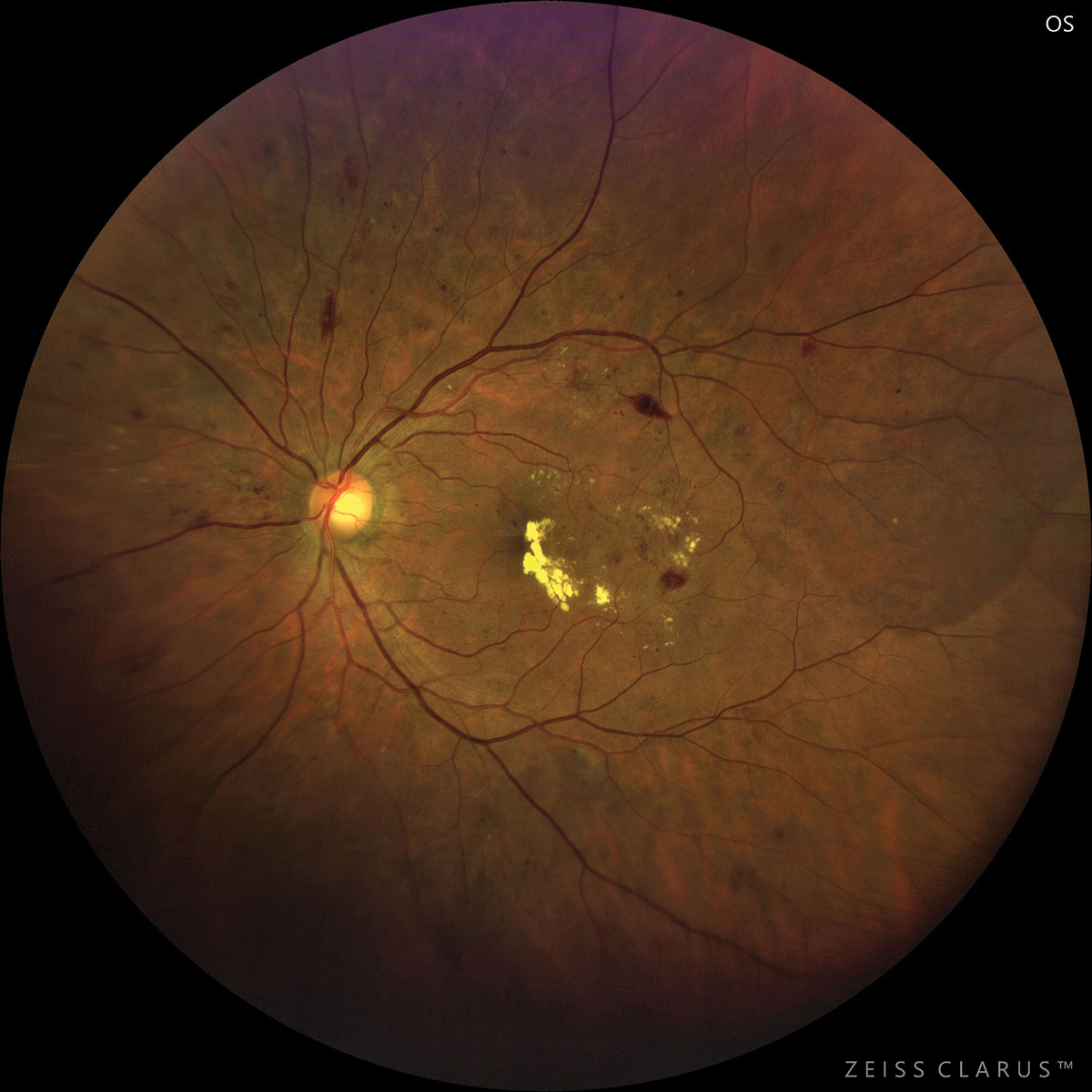 |
| Diabetic patients with macular edema, such as this patient with CSME, may have worse anti-VEGF treatment outcomes than those with better retinal parameters. Photo: Jay M. Haynie, OD. Click image to enlarge. |
Yesterday afternoon at the ARVO 2022 conference in Denver, authors of a recent study presented their findings on the relationship between retinal thickness parameters and response to anti-VEGF therapy in patients with diabetic macular edema (DME).
A total of 126 patients (151 eyes) who received their first anti-VEGF injection between January 2016 and December 2019 with more than six months of follow-up were included. Thresholds for visual acuity (VA) and central retinal thickness improvement categorized eyes as good, VA only, retinal thickness only and poor. Inner and outer retinal layer thickness was also measured.
Fifty-seven percent of eyes met the threshold for VA response and 43.7% for retinal thickness response: 32.5% were good responders, 21.9% VA only, 11.3% retinal thickness only and 34.4% poor responders. In general, decreased outer retinal thickness was more likely to be present in eyes with poorer response to anti-VEGF.
The team concluded that outer retinal thickness was correlated with mean VA gain and likelihood of both VA and central thickness improvement in response to anti-VEGF therapy. Decreased baseline outer retinal thickness was associated with less favorable anatomic and functional outcomes after anti-VEGF therapy.
The authors also noted that this data suggests baseline outer retinal thickness in patients undergoing anti-VEGF treatment for DME might be a useful biomarker for treatment response.
Original abstract content © Association for Research in Vision and Ophthalmology 2022.
Mitzner M, Fickweiler W, Robinson D, et al. Baseline outer retinal layer thickness is associated with response of diabetic macular edema to anti-VEGF therapy. ARVO 2022 annual meeting. |

